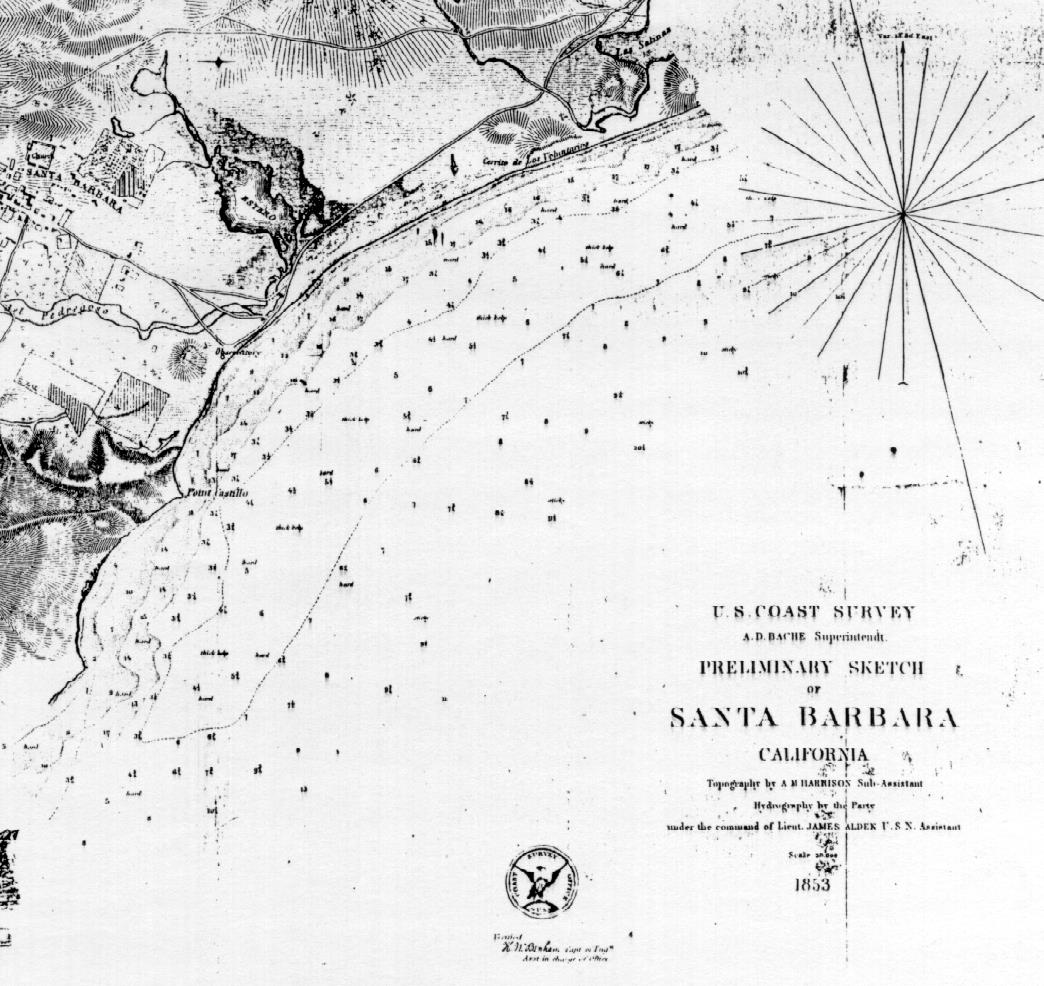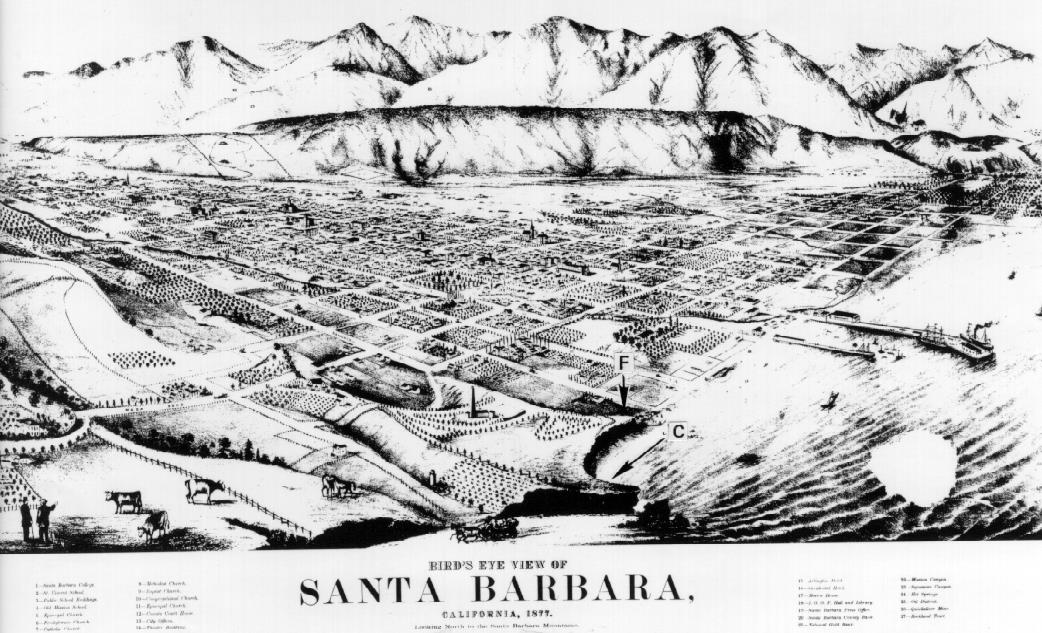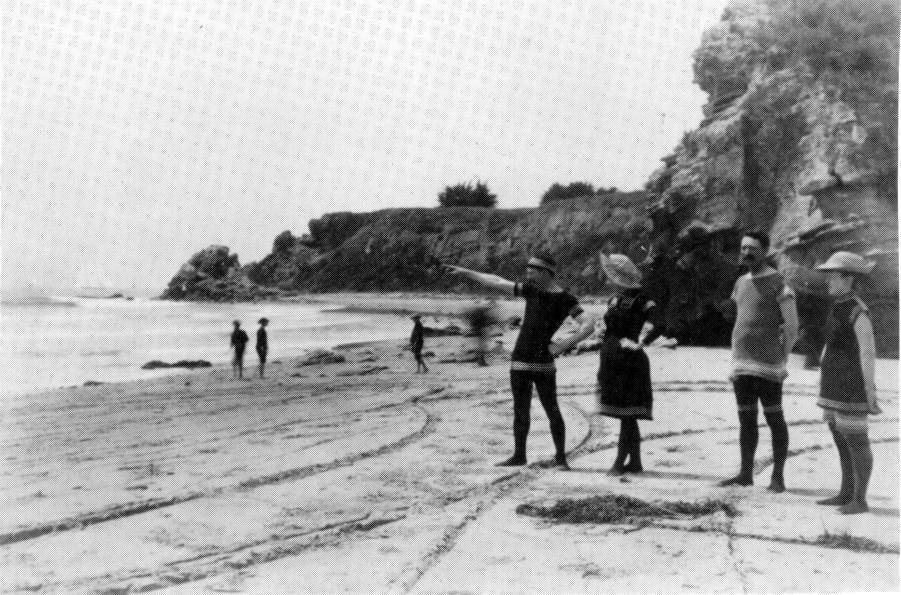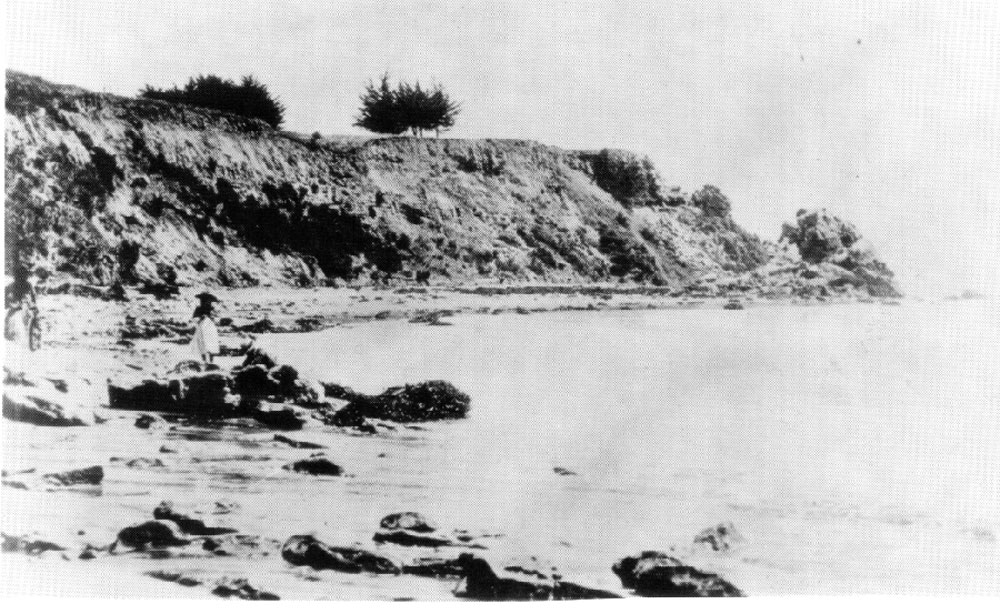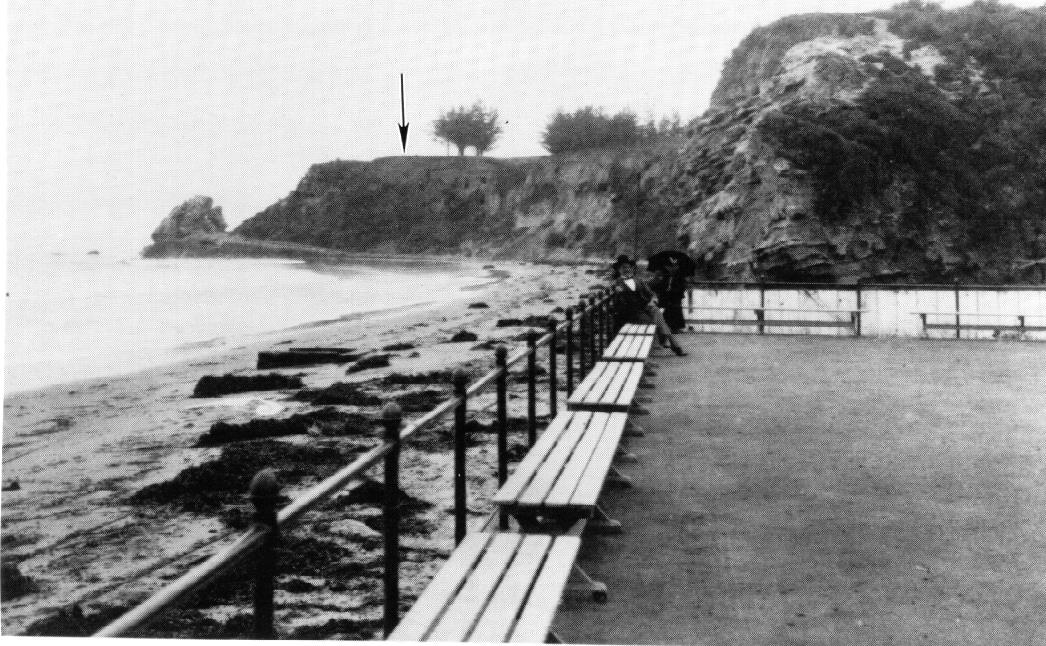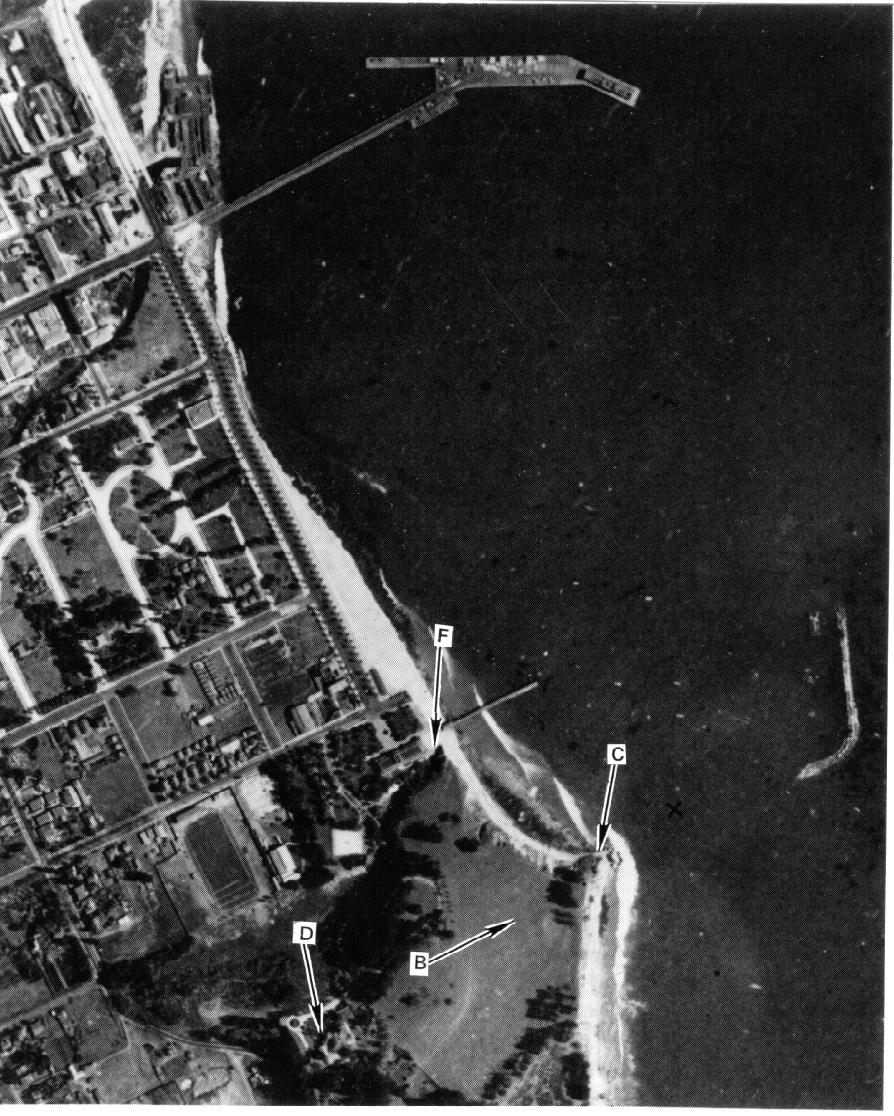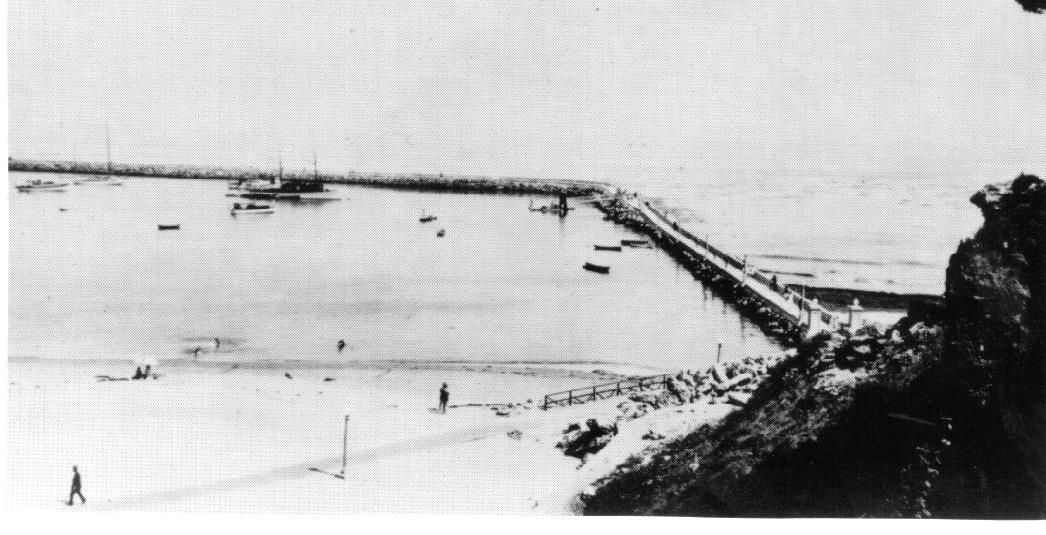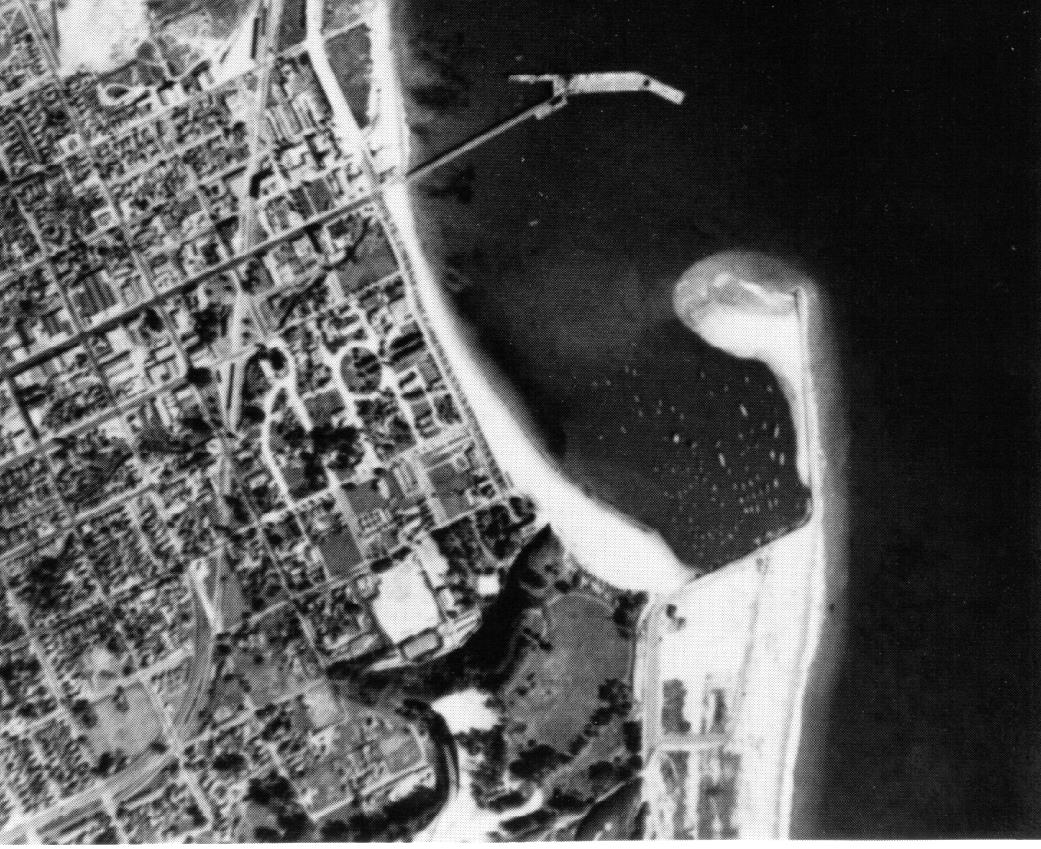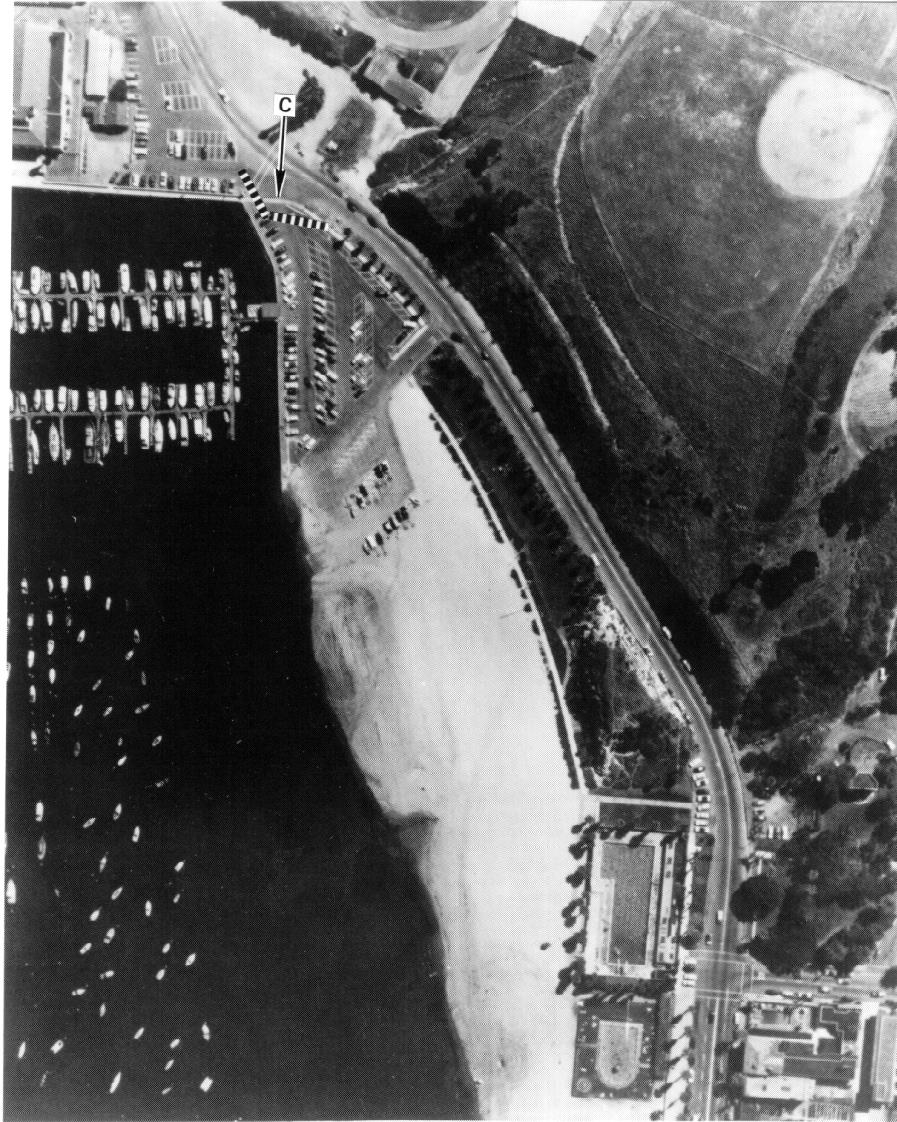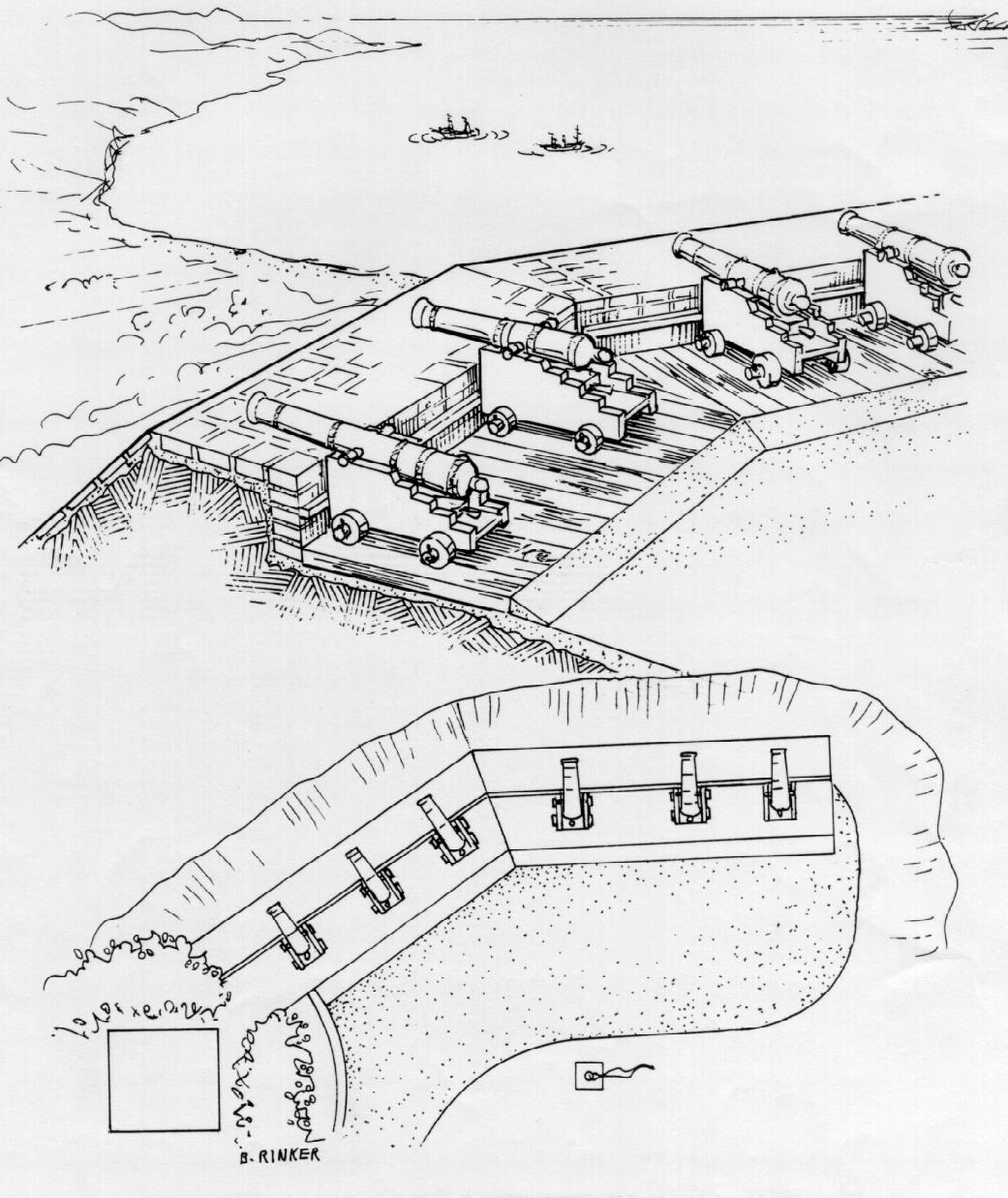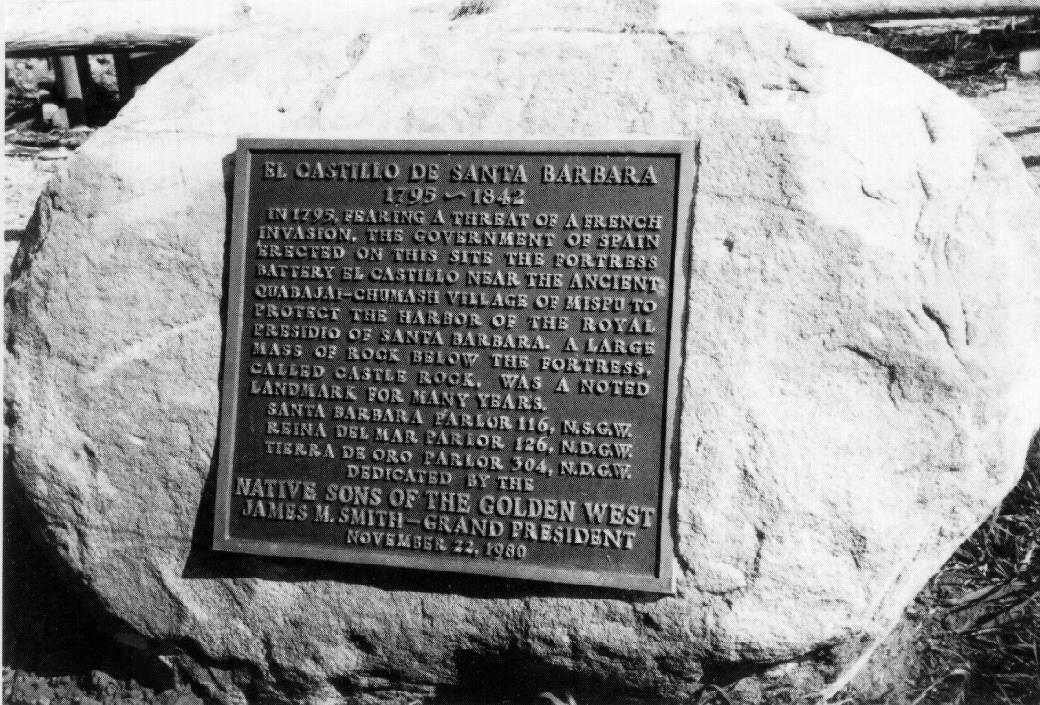And as in the other Castillos there is a comment from Vancouver that pertains to the Castillo at Santa Barbara published in Vancouver in California 1792-1794 Vol. I, pg. 241, as follows:
- "Santa Barbara is a post of no small consequence, and might be rendered very tenable, by fortifying a hill conspicuously situated for such a purpose on the north-west side of the roadstead; yet they have here only two brass nine-pounders, placed before the entrance into the Presidio, which is situated in the valley or plain beneath, at the distance of about a mile from this eminence. As this post is the key to all the communication between their northern and southern establishments, it was worthy to remark, that they had not attempted to provide roads…"
- "Having no fort, Santa Barbara obtained no part of the reinforcements of artillerymen and infantry sent to California in 1796, and was garrisoned by cuera cavalrymen only. The annual appropriation for this presidio from the royal treasury did not vary much from $15,000."
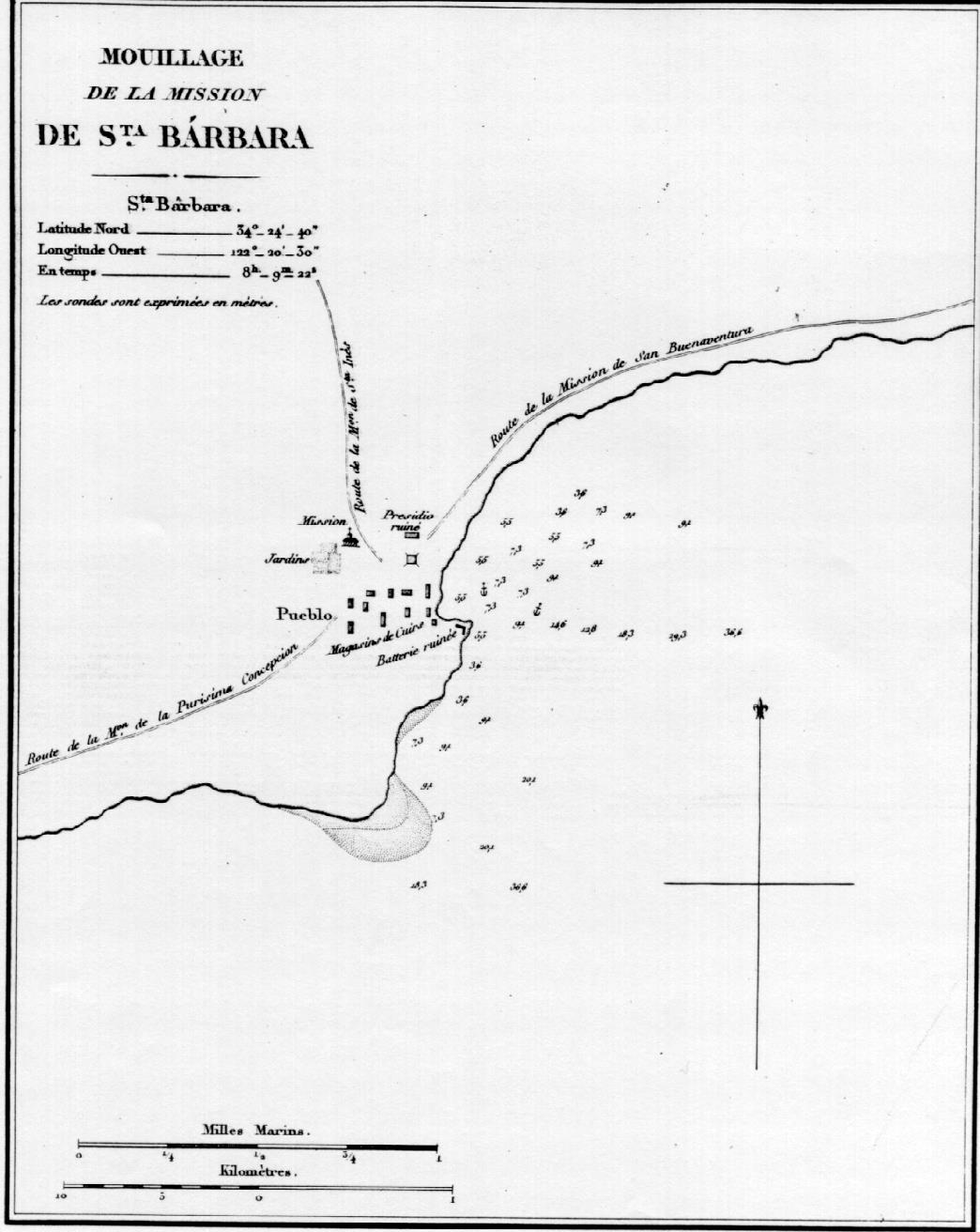
- "At Santa Barbara, the garrison at the presidio, which is now in ruins, includes a dozen soldiers in command of four officers. Four bronze pieces lie buried in the sand. A small point on which was once situated the ancient Spanish battery which is now razed."
In 1853, the U.S. Coast Survey made its first map of Santa Barbara after the conquest. It also identifies a "Point Castillo" at the place indicated by DuFlot de Mofras.
- "Captain Garcia's boat went aground on the other side of the castle and now they are unloading the cargo, which it is believed can be saved somewhat. The boat was lost forever."
The American Army took possession of the Presidio and Castillo in 1847. An article in the Santa Barbara Daily Independent on April 6, 1892 describes what they found as follows:
-
- "This "Punta del Castillo" which is really the outward point of the fortification, in English, marks the place where formerly stood an old Spanish earthwork fortification or fort. In the early days when Americanos came to California there were mounted three old iron six or nine pounders whose muzzles looked out to sea in a threatening manner. This spot was then known as "El Castillo." For years it stood alone and unguarded. The fingers of time touched it more and more till nothing was left but the old guns - dangerous to only those who discharged them - and later even these were removed. Then came into use the name it now bears, "La Punta del Castillo" which signifies the place where the castle or fort stood. In the year 1847 when Capt. Henry Carnes, John Scollan and Thomas S. Martin - all members of the U.S. Army, were new comers in Santa Barbara there was no depression between the bluff and what we now call Castle Rock. Then one could pass from the bluff where the fort stood to the rock with no trouble."
- "This "Punta del Castillo" which is really the outward point of the fortification, in English, marks the place where formerly stood an old Spanish earthwork fortification or fort. In the early days when Americanos came to California there were mounted three old iron six or nine pounders whose muzzles looked out to sea in a threatening manner. This spot was then known as "El Castillo." For years it stood alone and unguarded. The fingers of time touched it more and more till nothing was left but the old guns - dangerous to only those who discharged them - and later even these were removed. Then came into use the name it now bears, "La Punta del Castillo" which signifies the place where the castle or fort stood. In the year 1847 when Capt. Henry Carnes, John Scollan and Thomas S. Martin - all members of the U.S. Army, were new comers in Santa Barbara there was no depression between the bluff and what we now call Castle Rock. Then one could pass from the bluff where the fort stood to the rock with no trouble."
- "Father Ripoll, the superior of the Santa Barbara Mission, organized an Indian force of one hundred and eighty men to cooperate with the soldiers of the presidio; but as the Indians were untrained and as the few small guns of the presidio, and of the Castillo on the Mesa, would be of little avail in opposing the armament of the two vessels, orders were issued that the women and children should be prepared for flight to Santa Ynez."
"I was unable to obtain permission from the owners to explore this site. Superficial survey showed that a dense bed of camp refuse covered a wide area at the brink of the cliff. At the eastern extremity of this deposit, one can trace the outline of the Spanish redoubt that once guarded the harbor. About three hundred yards to the north of this "Castillo" are the indications of another but less extensive rancheria site on slightly higher ground."
"Straight back from the point where the Spanish fortress stood about 1,200 feet, is the old Indian graveyard in the center of what was formerly Leadbetter's polo field. Mr. Harrington also obtained a cannon ball of the old fortress, which was found by Charles T. Hall, 105 Bath Street in 1871. Some of the mortar work of the old fort was still standing at that time. The point was formerly named La Punta de Castillo, according to Mr. Harrington, deriving its designation from the fortress which was built there as a part of the defense of the old Presidio Santa Barbara."
